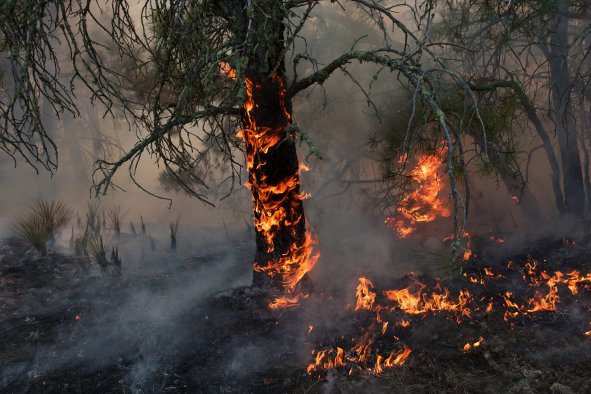Astronomers have just spotted a new comet, which might be as bright as Venus in our skies in the coming months.
The comet has not been formally named but has been provisionally designated A11bP7I. It could be visible with the naked eye in late October and early November and possibly even during daylight, according to spaceweather.com.
Astronomers spotted the comet using the ATLAS survey in Hawaii. It is a type of comet known as a "Kreutz sungrazer."
Kreutz sungrazers belong to the Kreutz group, a family of comets known for their extremely close approaches to the sun. These comets are called "sungrazers" because their orbits bring them near the sun, often within a few thousand kilometers of its surface.
Due to their proximity to the sun, most Kreutz sungrazers disintegrate and vaporize because of the intense heat and gravitational forces. Only larger sungrazers survive passing close to the sun, but if they do, their bright tails can become visible from Earth.
"Kreutz sungrazers are basically a family of comets. The group was first recognized and studied by Heinrich Kreutz in the late 19th century. Studies of the orbits of the brightest ones reveal that all probably originated from one comet more than 2,000 years ago," comet expert Gary Kronk, an amateur astronomer and writer, told Newsweek.
One notable sungrazer is Ikeya–Seki (C/1965 S1), which had a magnitude of -11 and was visible during the day at noon in 1965. In astronomy, magnitude refers to the brightness of an astronomical object, such as a star, planet, or galaxy, as seen from Earth.
The magnitude scale is logarithmic and inversely proportional, meaning brighter objects have lower numbers or larger negative numbers, and dimmer objects have higher positive numbers. The full moon has a magnitude of -13, while Venus has a magnitude of -5.
A11bP7I may get as bright as magnitude -5 to -7, making it bright enough to see with the naked eye in the next month or so and potentially brighter than Venus.
"A11bP7I is at least 4-5 magnitudes fainter than Ikeya-Seki at the same distance," Qicheng Zhang, an astronomer at the Lowell Observatory, told spaceweather.com. "Nonetheless, it could still produce a prominent visual display in early November if it survives its close encounter with the sun."
However, this may not come to fruition, as the comet may not survive its skirt with the sun on October 28 or may just be flaring early.
"Kreutz comets often exhibit 'outbursty' behaviors. So, while I hope with all my heart for an Ikeya-Seki 2.0, it seems this could also be a much smaller Kreutz fragment that has simply erupted a little ahead of schedule [making us think it is bigger and brighter than it actually is]," sungrazer comet expert Karl Battams of the Naval Research Lab told spaceweather.com.
Do you have a tip on a science story that Newsweek should be covering? Do you have a question about comets? Let us know via science@newsweek.com.
Disclaimer: The copyright of this article belongs to the original author. Reposting this article is solely for the purpose of information dissemination and does not constitute any investment advice. If there is any infringement, please contact us immediately. We will make corrections or deletions as necessary. Thank you.



